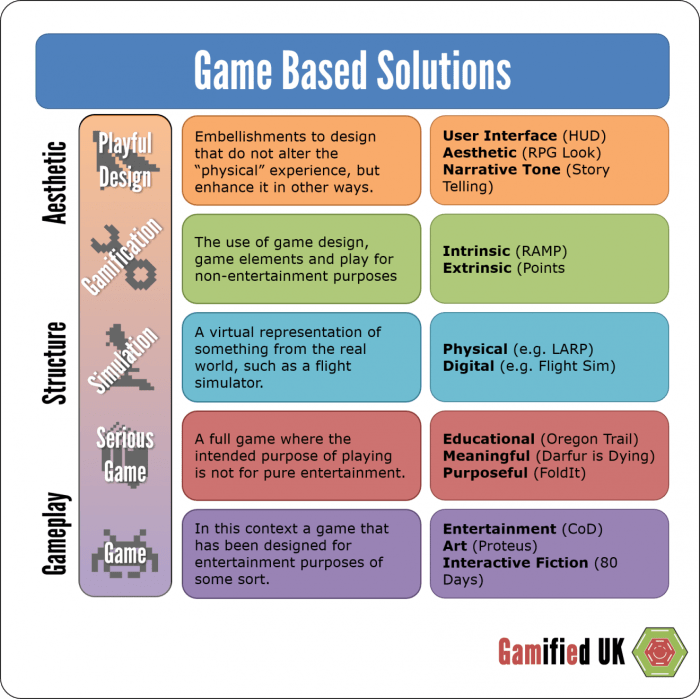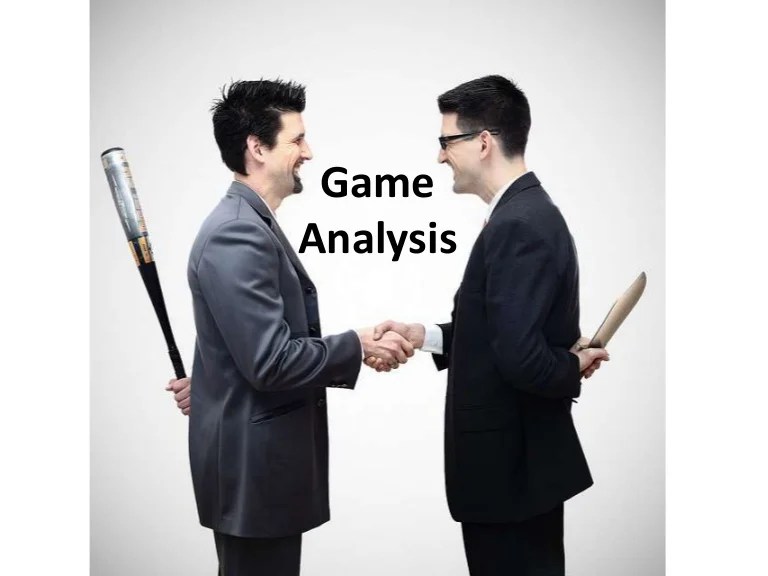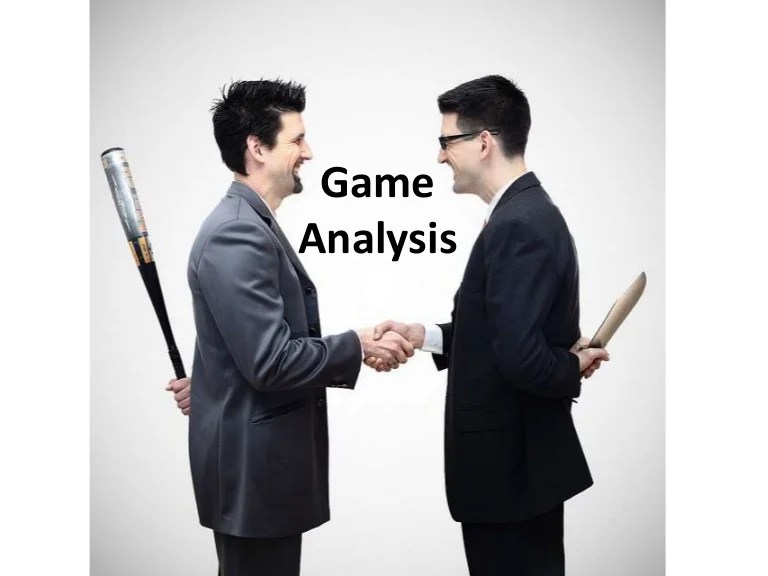Game Analysts, they’re the unsung heroes behind your favorite games! These data detectives dive deep into player behavior, game mechanics, and market trends to help developers create truly awesome experiences. Think of them as the bridge between raw data and impactful game design, shaping everything from in-game economies to character progression. This deep dive explores their world, from day-to-day tasks to future trends in the ever-evolving gaming industry.
We’ll cover the nitty-gritty of their job, the skills needed, and how their analysis shapes the success of games. We’ll explore different analytical techniques, the types of games they analyze, and how their work contributes to a better player experience. Plus, we’ll peek into the future of game analysis and the emerging technologies that are changing the game (literally!).
Types of Games Analyzed & Specific Focus Areas

Game analysis isn’t a one-size-fits-all affair. The methods and metrics used to evaluate a mobile puzzle game drastically differ from those applied to a sprawling MMORPG. The genre, platform, and business model all significantly impact the analytical approach. This section explores the diverse types of games analyzed and the specific focus areas that drive effective game analysis.Analyzing different game genres presents unique challenges.
For example, a fast-paced FPS demands a focus on real-time performance metrics like kill/death ratios and time-to-kill, whereas a narrative-driven RPG might prioritize player engagement with story elements and character development. Mobile games, with their often free-to-play models, require a deep dive into monetization strategies and retention rates. Each genre necessitates a tailored approach, utilizing different data sources and analytical techniques.
Genre-Specific Analytical Challenges
The analytical challenges vary wildly depending on the genre. Real-time strategy (RTS) games require analyzing complex interactions between multiple players, often across vast maps and long gameplay sessions. This necessitates sophisticated data aggregation and modeling to identify patterns and bottlenecks. In contrast, puzzle games focus on individual player performance and progression, with metrics like completion rates and average solve times taking center stage.
Massive Multiplayer Online Role-Playing Games (MMORPGs) present a unique challenge due to their persistent worlds, huge player bases, and complex social interactions. Analysts must grapple with vast datasets and identify trends across a diverse player population. Finally, competitive games like fighting games or MOBAs need sophisticated statistical analysis to determine balance, identify overpowered characters or strategies, and measure the impact of updates on competitive play.
Key Focus Areas in Game Analysis
Game analysis centers around several core areas, each crucial for optimizing the game’s design, development, and live operations.
Player Engagement
Understanding player engagement is paramount. This involves analyzing playtime, retention rates, daily/monthly active users (DAU/MAU), and player feedback. Low engagement might indicate problems with gameplay, progression systems, or overall game design. For example, a sudden drop in DAU could point to a recent update that negatively impacted the player experience. Effective engagement analysis requires a blend of quantitative data and qualitative feedback, providing a holistic view of player behavior.
Monetization
For many games, especially free-to-play titles, monetization is a critical focus. Analysts track key metrics like average revenue per daily active user (ARPDAU), conversion rates (from free to paying players), and the effectiveness of different in-app purchase options. This involves understanding player spending habits, identifying high-value players, and optimizing pricing strategies. For instance, analyzing the success of different in-game item bundles can help developers refine their monetization approach and maximize revenue.
Game Balance
Maintaining game balance is vital for competitive and cooperative games. Analysts track win rates, character usage statistics, and player feedback to identify imbalances. If one character or strategy significantly outperforms others, it can lead to a negative player experience and reduced engagement. Adjustments to game mechanics, character stats, or item attributes are often made based on this data to ensure fair and engaging gameplay.
For example, in a MOBA, if a particular hero has an excessively high win rate, analysts would investigate and suggest adjustments to their abilities or stats to bring them in line with other heroes.
Game Analysis in Design and Development
Game analysts are not just post-launch evaluators; they play a crucial role throughout the entire development lifecycle. During the design phase, they can help validate game concepts and mechanics through playtesting and data analysis. In development, they can track progress against milestones, identify potential problems early on, and suggest improvements based on data-driven insights. For example, A/B testing different level designs can help developers determine which versions are more engaging and enjoyable for players.
Game Analysts in Live Operations and Post-Launch Support
Post-launch, game analysts are essential for monitoring game performance, identifying issues, and implementing updates to improve player experience and game health. They use data to inform decisions about content updates, balancing changes, and marketing campaigns. For example, by tracking player feedback and in-game metrics, they can identify bugs, glitches, or areas of the game that need improvement. They then work with the development team to address these issues and improve the overall player experience.
This continuous feedback loop ensures the game remains engaging and successful over time.
The Impact of Game Analysis on Game Development & Success

Game analysis isn’t just about crunching numbers; it’s the key to unlocking a game’s full potential. By meticulously examining player behavior, game mechanics, and market trends, developers can make data-driven decisions that significantly improve both the design and the overall success of their games. This process transforms the often-intuitive approach to game development into a more strategic and efficient endeavor.Game analysis contributes significantly to improved game design and player experience by providing concrete evidence of what works and what doesn’t.
Instead of relying on gut feelings or anecdotal evidence, developers can use data to identify areas needing improvement, pinpoint frustrating elements, and optimize rewarding aspects of the game. This results in a more polished, engaging, and ultimately, more successful product.
Data-Driven Insights and Successful Game Updates
Data-driven insights gleaned from game analysis often lead to successful game updates and the introduction of new features. For example, analyzing player progression data might reveal a bottleneck in a particular level, leading developers to adjust difficulty, provide more hints, or redesign the level entirely. Similarly, analyzing player engagement with in-game items can inform decisions about monetization strategies, ensuring fair and effective implementation of microtransactions.
Analyzing player feedback through surveys and in-game chat logs can also reveal underlying issues and suggest solutions.
Game Analysis and Market Success
The relationship between game analysis and market success is undeniable. Games that leverage data-driven insights tend to perform better in terms of player retention, monetization, and overall player satisfaction. By understanding player behavior, developers can tailor their games to specific audiences, increasing the likelihood of attracting and retaining a large player base. This leads to higher revenue generation and a longer lifespan for the game in the market.
Hypothetical Case Study: Revitalizing “Aetheria Online”, Game Analysts
Let’s imagine “Aetheria Online,” a fantasy MMORPG experiencing declining player retention. Analysis reveals that players are struggling with the complex crafting system and are abandoning the game before reaching the mid-game content. Using game analysis tools, the development team identifies specific pain points: a confusing crafting interface, an overwhelming number of crafting recipes, and a lack of clear rewards for crafting.Based on this analysis, the team implements the following changes: simplifies the crafting interface, streamlines the crafting recipes, and introduces a new reward system that grants unique in-game items and boosts player stats.
The results are dramatic.
| KPI | Before | After | Change |
|---|---|---|---|
| Daily Active Users (DAU) | 5,000 | 7,500 | +50% |
| Monthly Active Users (MAU) | 20,000 | 35,000 | +75% |
| Average Session Length | 30 minutes | 45 minutes | +50% |
| Player Retention Rate (Day 7) | 20% | 35% | +75% |
The Future of Game Analysis & Emerging Trends: Game Analysts

Game analysis is rapidly evolving, driven by technological advancements and the ever-changing landscape of the gaming industry. The integration of sophisticated tools and techniques promises to significantly enhance our understanding of player behavior, game design effectiveness, and overall market trends. This evolution presents both exciting opportunities and significant challenges for game analysts.The convergence of artificial intelligence (AI), machine learning (ML), and big data analytics is reshaping the field of game analysis.
These technologies allow for the processing and interpretation of massive datasets generated by modern games, offering unprecedented insights into player actions, preferences, and in-game economies. This level of detail was previously unimaginable, leading to more precise and effective game design and marketing strategies.
Emerging Technologies and Trends Impacting Game Analysis
AI and ML are revolutionizing how we collect and analyze game data. AI-powered systems can now automatically identify patterns and anomalies in player behavior that would be impossible for human analysts to detect manually. For example, AI can identify subtle indicators of player frustration or boredom, leading to targeted improvements in game design. ML algorithms can predict player churn and suggest strategies for retention, optimizing marketing campaigns and in-game events for maximum impact.
Furthermore, the increasing use of cloud computing allows for the processing of enormous datasets in real-time, enabling rapid feedback loops and dynamic adjustments to game design and monetization strategies. Think of it like having a constantly updating, incredibly detailed heatmap of player activity across the entire game world.
The Future Role of Game Analysts in the Evolving Gaming Landscape
The role of the game analyst is expanding beyond traditional data analysis. The integration of AI and ML means analysts will increasingly focus on interpreting and contextualizing the insights generated by these technologies. This requires a shift in skill sets, with a greater emphasis on data visualization, strategic thinking, and communication skills. Analysts will need to be able to translate complex data into actionable recommendations for game developers and marketing teams.
They will also play a crucial role in designing and implementing new AI-driven analytics tools, ensuring that these tools are effectively integrated into the game development lifecycle. Essentially, the future game analyst will be a data storyteller, translating raw numbers into compelling narratives that drive game development decisions.
Potential Challenges and Opportunities for Game Analysts
One major challenge is the ethical implications of using AI and ML to analyze player data. Privacy concerns and the potential for bias in algorithms need to be carefully addressed. Furthermore, the rapid pace of technological change requires continuous learning and adaptation. Game analysts will need to stay current with the latest tools and techniques to remain competitive.
However, these challenges also present significant opportunities. The demand for skilled game analysts is growing rapidly, offering lucrative career paths and the chance to shape the future of the gaming industry. The ability to leverage AI and ML to gain a competitive edge will be a highly sought-after skill. Think of the potential for creating truly personalized gaming experiences, tailored to individual player preferences and playing styles, leading to increased player engagement and satisfaction.
Anticipated Evolution of Game Analysis Tools and Techniques
A visual representation of the anticipated evolution of game analysis tools and techniques over the next five years could be depicted as a layered pyramid. The base represents current methods, primarily focused on manual data collection and analysis using spreadsheets and basic statistical software. The next layer shows the increasing integration of automated data collection tools and basic AI-powered pattern recognition.
The third layer highlights the sophisticated use of ML for predictive analytics and personalized recommendations. The top layer, representing the future, showcases fully integrated, real-time AI-driven systems that dynamically adjust game design and marketing strategies based on ongoing player behavior. This pyramid illustrates the shift from manual, reactive analysis to proactive, AI-driven insights that inform every aspect of game development and marketing.
User Queries
What’s the salary range for a game analyst?
It varies wildly based on experience, location, and company size, but expect a range from entry-level to six figures for senior roles.
What kind of education do I need?
A degree in a related field like math, statistics, computer science, or even game design is helpful, but practical experience and strong analytical skills are key.
Are there any specific software skills I should learn?
SQL, Excel, and data visualization tools like Tableau or Power BI are highly valuable. Familiarity with programming languages like Python is a huge plus.
Is it a competitive field?
Yes, it’s a growing field, but competition exists. Building a strong portfolio and showcasing your analytical skills will help you stand out.
